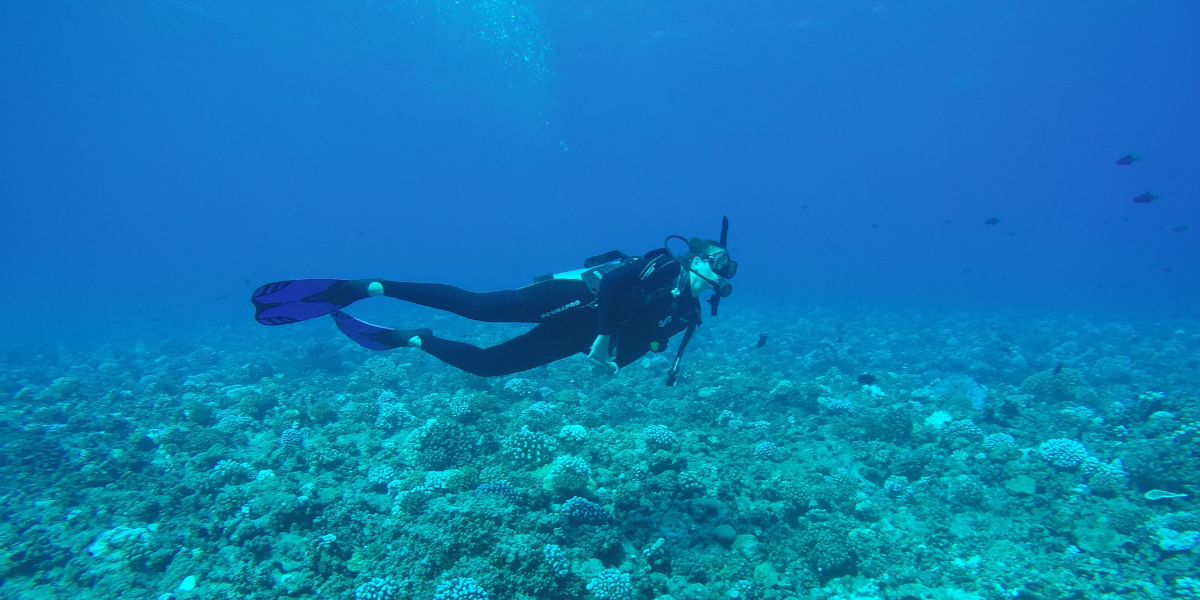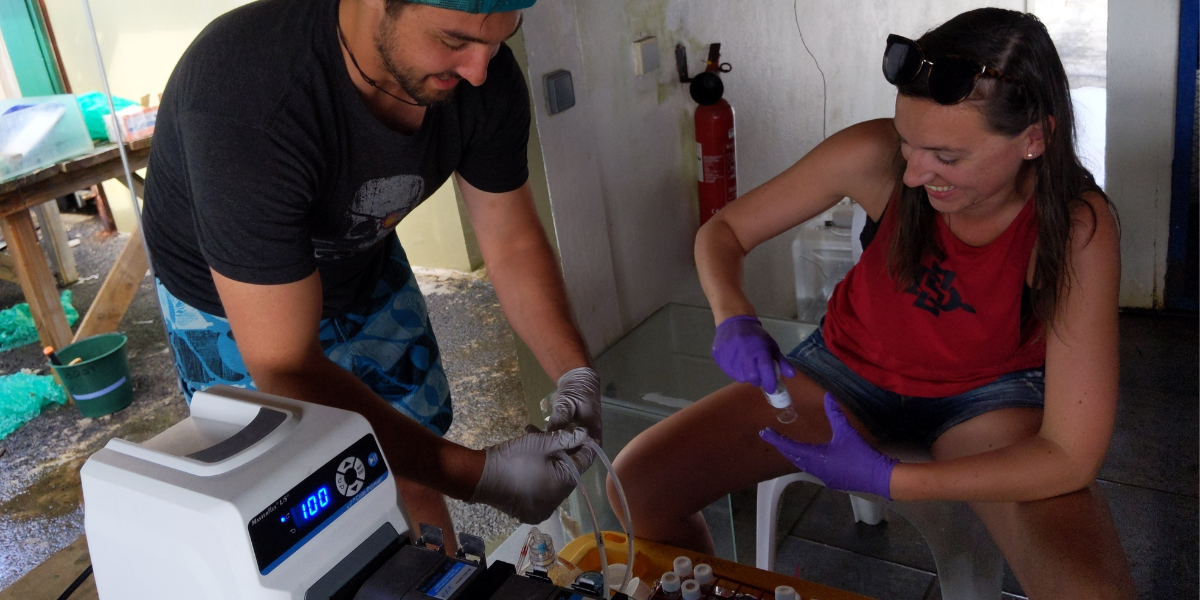Warming ocean turns coral environment upside down

~ For Dutch, scroll down ~
Bleeching
For her research, Arts and colleagues obtained small pieces of both healthy and bleached coral of three different species, from a reef near Moorea, in the archipelago of French Polynesia. Large-scale coral bleaching occurred there in 2019. In the laboratory, the researchers then exposed both coral types to either the normal average temperatures of the South Pacific (28,6 oC) or slightly elevated water temperatures (32 oC).
Changing bacterial community
Compared to the healthy coral at the normal temperature, the warmed coral released more organic matter into the water. These substances were also markedly different in composition. The effect was strongest in the coral that was healthy at the start and slowly faded during the experiment. In addition, the researchers saw a similar but slightly more modest effect in corals that had already faded.
The altered mix of organic molecules then also changed the composition of the bacterial community in the water around the coral, Arts and colleagues observed. "That bacterial community changed to the type we see around an algal reef, not like what we normally see around a coral reef," she said.

Better analysis
Research into the effects of warming ocean water has focused mainly on the coral itself, so far. The effects on the surrounding water are still largely unknown, says Arts: "It is thanks to increasingly better analysis techniques that we can now also look at the composition of the organic molecules in the water. And then it turns out that both that organic matter, and the complete microbiome of the water around warmed coral changes substantially." What effect this changing water quality may have on corals is still unknown. "But should not surprise us, when such a strong change in the microbiome in the water will prove to have implications for coral health," Arts states.
From the lab to the sea
This research involved coral under laboratory conditions. "Meanwhile, there are already indications that the composition of organic matter around natural reefs also changes when temperatures rise," Arts notes. Further research will have to clarify exactly which organic molecules are ‘eaten’ by bacteria in the water around a reef and exactly how the different bacteria affect the health of the reef.

Warmte zet het water rond koraal op zijn kop
Koraal dat wordt blootgesteld aan hogere temperaturen laat meer en ander organisch materiaal los in het zeewater. Het koraal voedt daarmee ongewenste bacteriën. Dat blijkt uit promotieonderzoek van marien biologe Milou Arts van het NIOZ. Samen met Amerikaanse collega’s publiceert zij over dit werk in het jongste nummer van Nature Communications Biology. “Zo’n verandering van de bacteriën rond het koraal zou heel goed consequenties kunnen hebben voor de gezondheid van het hele rif”, stelt Arts.
Verbleking
Voor haar onderzoek haalden Arts en collega’s een aantal stukjes van zowel gezond als verbleekt koraal van drie verschillende soorten, van een rif bij Moorea, in de archipel Frans-Polynesië. In 2019 trad daar op grote schaal verbleking van het koraal op. In het laboratorium stelden de onderzoekers die beide typen koralen vervolgens bloot aan de normale gemiddelde temperaturen van de zuidelijke Stille Oceaan (28,6 oC) dan wel een licht verhoogde watertemperatuur (32 oC).
Veranderende bacteriegemeenschap
In vergelijking met het gezonde koraal bij de gewone temperatuur, liet het opgewarmde koraal meer organische stoffen vrij in het water. Die stoffen waren ook duidelijk anders van samenstelling. Dat effect was het sterkst bij het koraal dat bij aanvang nog gezond was en tijdens het experiment langzaam verbleekte. Daarnaast zagen de onderzoekers een vergelijkbaar maar iets bescheidener effect bij de koralen die al verbleek waren.
De veranderde mix van organische moleculen zorgde vervolgens ook voor een andere samenstelling van de bacteriegemeenschap in het water rond het koraal, zagen Arts en collega’s. “Die bacteriegemeenschap had meer weg van die rond een algenrif dan wat we normaal zien bij een koraalrif.”
Betere analyse
In het onderzoek naar de effecten van opwarmend oceaanwater, is nu toe vooral naar het koraal zelf gekeken. De effecten op het omringende water zijn nog goeddeels onbekend, zegt Arts: “Het is dankzij de steeds betere analysetechniek dat we nu ook naar de samenstelling van de organische moleculen in het water kunnen kijken. En dan blijkt dat zowel die organische stof, als het complete microbioom van het water rond opgewarmd koraal wezenlijk verandert.” Wat het effect is van veranderende waterkwaliteit op de koralen is nog onbekend. “Maar het is wel denkbaar dat zo’n sterke verandering van het microbioom in het water gevolgen kan hebben voor de gezondheid van het koraal”, stelt Arts.
Van het lab naar de zee
Het onderzoek had betrekking op koraal onder laboratoriumcondities. “Inmiddels zijn er al aanwijzingen dat de samenstelling van het organisch materiaal rond natuurlijke riffen ook verandert wanneer de temperaturen stijgen”, zo tekent de onderzoekster daarbij aan. Verder onderzoek zal duidelijk moeten maken welke organische moleculen precies worden ‘gegeten’ door bacteriën in het water rond een rif en hoe de verschillende bacteriën de gezondheid van het rif precies beïnvloeden.
Wesley J. Sparagon*, Milou G.I. Arts*, Zachary Quinlan, Linda Wegley Kelly, Irina Koester, Jacqueline Comstock , Jessica A. Bullington, Craig A. Carlson, Pieter C. Dorrestein, Lihini I. Aluwihare, Andreas F. Haas and Craig E. Nelson. (2024) Coral thermal stress and bleaching enrich and restructure reef microbial communities via altered organic matter exudation. Communications Biology, DOI: 10.1038/s42003-023-05730-0
